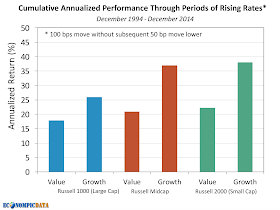Eugene Fama and Kenneth French released their seminal white paper 'The Cross-Section of Expected Stock Returns' in June 1992 which added value (as well as size) as explanatory factors that drove market (out)performance.
Per Investopedia:
Fama and French attempted to better measure market returns and, through research, found that value stocks outperform growth stocks.
Why does the value premium exist? There are broadly two explanations... an efficient market explanation and inefficient market explanation. Back to Investopedia:
On the efficiency side of the debate, the outperformance is generally explained by the excess risk that value and small cap stocks face as a result of their higher cost of capital and greater business risk. On the inefficiency side, the outperformance is explained by market participants mispricing the value of these companies, which provides the excess return in the long run as the value adjusts.
While I don't believe markets are completely efficient (too much proof outlining the opposite), I do believe markets are generally pretty darn good at eliminating blatant inefficiencies once discovered.
What happens when inefficiencies are identified?
Investor flows come in eliminating the inefficiency and the plain vanilla version of the value factor (price to book) appears to be no exception. Between 1995 and the end of 2014, the amount of money allocated to passive large value funds / ETFs grew more than 30% compounded / year, growing from slightly over $1 billion to more than $180 billion (and this doesn't include the MASSIVE amount of institutional separate accounts that went this direction), while small value went from literally $0 indexed to $18 billion in funds and ETFs. Including active managers, large / small value fund / ETF AUM grew from $86 billion to more than $1.1 trillion over that time frame.
The declining value premium
Below is a long term chart of the difference between the cheapest and richest stocks by book-to-market (the Fama French size factor) over rolling twenty year periods (20 years as this closely matches the time frame since the 3-factor white paper was published). While not necessarily completely dead, there is a material decline.
And how has this translated to index performance? Well, over shorter time frames, the results are even more striking (investor performance is similar in that the average "dumb" growth investor has outperformed the average value investor over these periods, despite a larger behavioral gap in growth than in value).
As of February 28, 2015
Even the best value investor of our time has seen massive compression in his ability to outperform (pulled from the always great blog A Wealth of Common Sense).
Is the value premium dead?
Despite all of the above, in my view... absolutely not. What I feel is dead is an investor's ability to capture the value premium by simply allocating to companies with lower price multiples, ignoring all other fundamental aspects (growth, competitive landscape, etc...). In other words, like anything else in investing that becomes well known, the ability to outperform requires skill as the low hanging fruit of value may be dead.
Additional note: I find it utterly fascinating that those investors who believe active management is dead, pointing to the underperformance of passive over the last 5+ years as proof, are in many cases the same investors that believe value works, but it just needs "more time" or a different screen than book to price (the latter being an "active" decision).









